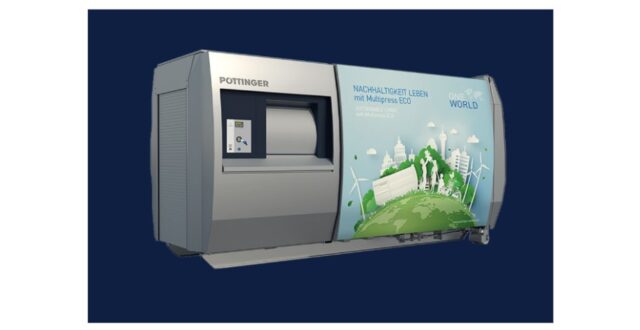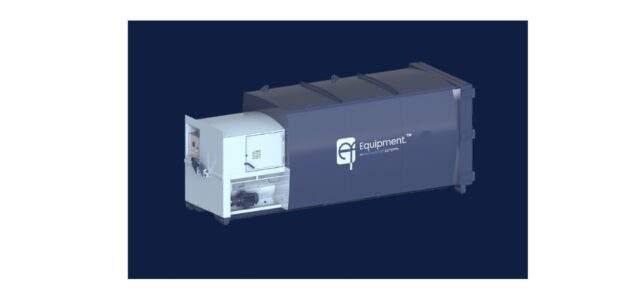Within the realm of waste management, the garbage compactor stands as a fundamental device, wielding the power to compress and condense a motley crew of refuse and waste materials. This intricate dance, orchestrates the reduction of waste volume, rendering it eminently manageable. Garbage compactors are a common sight in commercial domains, gracing the precincts of restaurants and supermarkets, where their prowess shines in diminishing the burden of waste disposal. In recent times, they’ve also found their way into the heart of residential abodes, serving as guardians of the space economy. This introduction is your gateway into the inner workings of these compaction champions, their bountiful advantages, and the safety considerations that tread alongside their usage.

History
The story of the garbage compactor is a tale of relentless evolution, with roots dating back to the late 1940s. The pioneers of this ingenious device were none other than the Frigidaire Corporation, a US-based company that envisioned an efficient and hygienic storage solution for household waste. The original design bore the essence of simplicity—a metal box with a lid, tethered to an electric motor that sprung to life when beckoned. Its mission was clear: to compress the contents, thereby drastically reducing the space required for the storage of household refuse. In essence, it aimed to usher in a more environmentally friendly manner of disposal.
Over time, the compactor’s evolution marched forward. Innovations emerged, enhancing their efficiency manifold. These include the adoption of advanced insulation materials that bolstered energy efficiency, a symphony of compaction chambers that catered to larger waste volumes, and cutting-edge noise reduction technology that tamed the decibels during operation. The advent of automatic sensors ushered in a new era, one where these machines could intuitively detect incoming waste and leap into action without human intervention. Today, these garbage compactors stand as sophisticated workhorses, serving a broad spectrum of applications across homes and industries, driven by their efficiency and ease of use.
Types/Designs of Garbage Compactors
Garbage compactors belong to the family of machines engineered to transform solid waste into compact, manageable bundles. They find their natural habitat in businesses like restaurants, hotels, and hospitals, where the conundrum of waste storage space finds an elegant solution. The grand stage of garbage compactors hosts four main players:
- Stationary Compactor: A titan amongst its peers, the stationary compactor assumes the form of a large container strategically placed to welcome waste. This category requires manual loading and unloading of waste materials into the container, championing efficient processes while minimizing its footprint when idle.
- Self-Contained Compactor: A self-contained compaction unit dons a dual hat, playing the roles of both waste collector and waste compressor. This compact package combines a bin or hopper for material collection with an internal mechanism that leaps into action upon material loading. Operating solely on electrical power, it keeps things streamlined.
- Vertical Compactor Dumpster System (VCDS): The VCDS juggles its responsibilities with poise. It comprises an integrated compactor and dumpster, operating in harmony to streamline waste disposal. Waste materials land in the dumpster, while the compactor’s forceful embrace awaits within, ready to reduce it to manageable proportions.
- Automated Compactor Systems: Automation takes centre stage in this category, where intelligent systems do the heavy lifting. They detect waste, prompt the compaction process, and leave you with compacted bundles of refuse.
How a Garbage Compactor Works
The allure of garbage compactors lies in their remarkable waste volume reduction capability, slashing it by up to 80%. The process unfolds like a choreographed dance, with each step driving waste closer to its compacted destiny.
The symphony begins with the loading of the compactor with garbage. At this stage, a plate or ram poised at the pinnacle of the unit swoops down, pressing and compressing the waste into more modest dimensions. This action goes beyond mere compression; it evacuates air from the chamber, further diminishing the waste’s volume. The choice of mechanism may vary based on the type of material in question. Some units enlist hydraulic or pneumatic systems to bolster the force applied by the ram plates, magnifying the crushing prowess.
Once a significant volume of material has been compressed in one area, it embarks on its journey out of the compactor through a lower outlet. These outlets often sport special sensors that can sense the force being applied against them. This sensory acumen ensures that the compactor is ever-ready for fresh loads, preventing spillage and mishaps. Many models incorporate safety features, including automatic shutoff switches, acting as sentinels to forestall overload-induced calamities or mishaps arising from human presence during operation.
Advantages of Using a Garbage Compactor
When grappling with the vexing issue of garbage management, a garbage compactor shines as a beacon of efficiency. This trusty appliance, through its tireless crusade of crushing and compacting, reimagines waste materials in a more streamlined form, fit for efficient disposal. The benefits it offers are as abundant as they are diverse.
Let’s commence with cost savings. The judicious use of a garbage compactor slashes the outlay associated with waste disposal. By shrinking the volume of trash in each load, it translates to fewer trips for disposal at landfills or recycling centres. Fewer trips spell savings in both time and fuel, not to mention the labour expenses linked to transporting hefty loads. Furthermore, the compactor’s knack for reducing trash volume by up to 80% implies fewer collection runs, ushering in a virtuous cycle of cumulative cost savings in fuel and labour expenses.
The efficiency of space utilization serves as another feather in the compactor’s cap. These nifty devices play guardian to your storage space, ensuring that less room is gobbled up by trash bins and bags. In this newfound spatial freedom, you unlock potential. The freed-up area can morph into storage space for a myriad of purposes, from additional storage shelves to accommodating new furniture.
Disadvantages or Limitations to Using a Garbage Compactor
However, amidst the triumphs and accolades, it’s imperative to confront the less glamorous aspects of garbage compactors. This coin bears a flip side, one marked by a cluster of disadvantages and limitations.
Let’s commence with cost considerations. Garbage compactors don’t come cheap. When juxtaposed with the simplicity of regular garbage cans or bins, their cost can feel prohibitive, especially for smaller households or businesses. The toll doesn’t end there; these machines also gulp electricity to fuel their operations, ushering in an additional layer of costs. As if this weren’t enough, maintenance costs add to the tally, as they require regular cleaning to ensure hygiene. Left untended, they can spiral into malodorous realms, summoning unpleasant and unhygienic conditions.
A significant drawback is their size. The very design that empowers them to deliver on their promise also leads to space consumption. For tighter spaces like kitchens or bathrooms, where the spatial equation is a sensitive balance, compactors may find themselves unwelcome guests. They demand ample breathing room to ensure users can access the compactor’s lid safely, minus the risks posed by sharp edges or falling objects during operation.

Conclusion
In the grand tapestry of waste management, garbage compactors emerge as both efficient and effective tools. They act as modern alchemists, transforming bulky heaps of refuse into compact, manageable bundles. In doing so, they shoulder the responsibility of cost reduction and efficient space utilization, granting respite from the logistical challenges of waste disposal. However, these marvels are not without their caveats. Cost, both in terms of acquisition and operation, takes centre stage. They bear the weight of space requirements and necessitate diligent maintenance to guard against the spectre of unpleasant odours. Yet, despite these limitations, their value in curbing waste and expanding the horizons of space efficiency remains undeniable, making them an ally in the pursuit of effective waste management.









